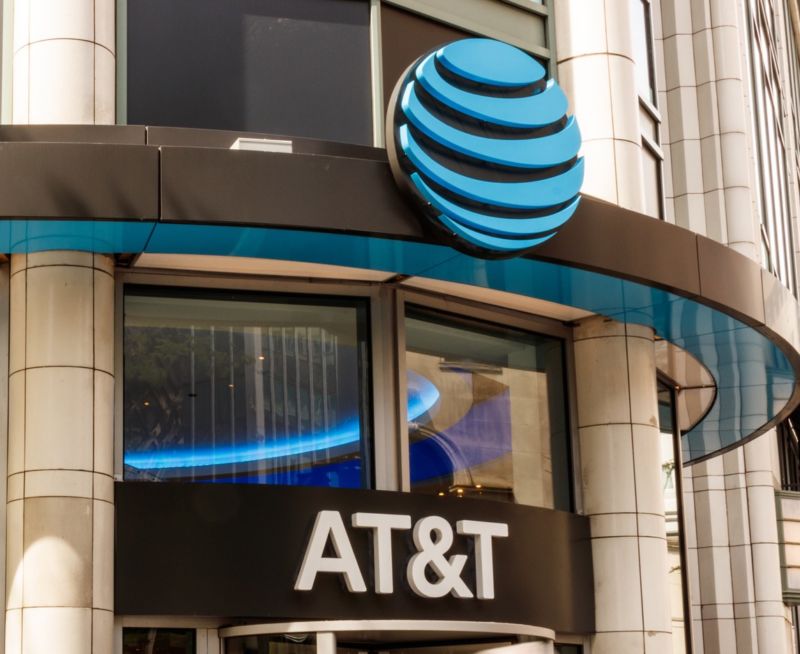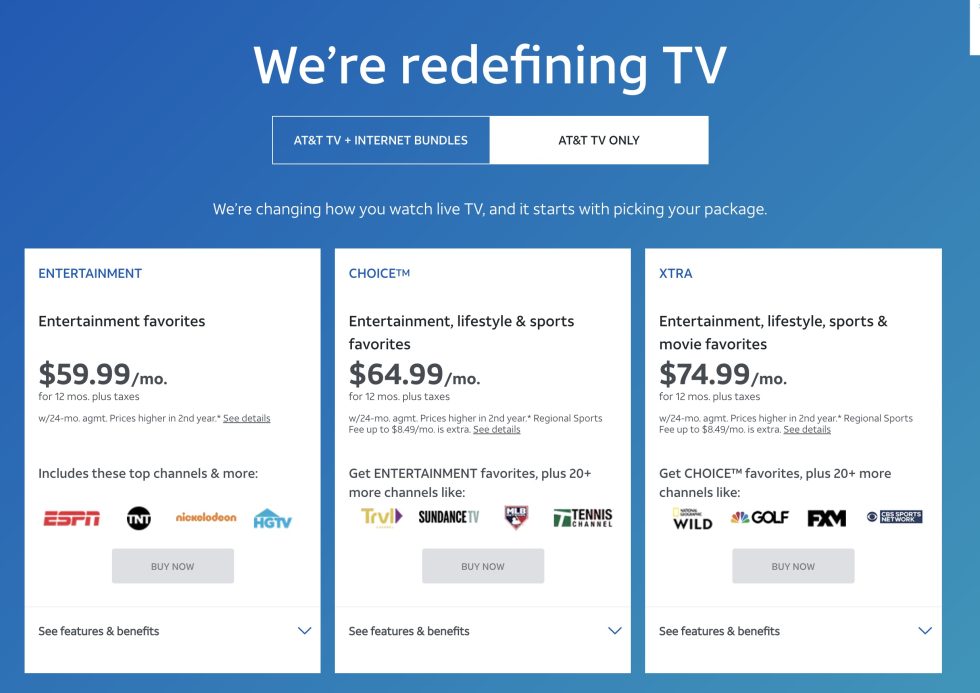

reader comments
137 with 96 posters participating
AT&T is now charging up to $135 a month for the online video service formerly known as DirecTV Now.
DirecTV Now launched in 2016 with plans ranging from $35 to $70 a month for 60 to 120 channels. There have been several price increases and a reduction in the number of channels since, resulting in AT&T offering just two packages of $50 a month for 45 channels and $70 a month for 60 channels.
This week, AT&T completed the name change from DirecTV Now to “AT&T TV Now.” The $50 and $70 plans still exist, but AT&T TV Now customers can also get 65 channels for $93 a month, 85 channels for $110, 105 channels for $124, or 125 channels for $135. There’s also a Spanish-language plan called Óptimo Más with 90 channels for $86 a month.

Channel lineups on the $50 and $70 plans include HBO, but HBO costs $15 extra each month on the more expensive plans. Full channel lineups for each of these plans are available at this link.
The plans come with 20 hours of Cloud DVR storage. The standard prices allow streaming on two devices at the same time. You can make that three simultaneous devices for $5 a month extra.
Even AT&T’s DirecTV satellite plans have lower per-channel advertised rates, ranging from $60 a month for 155 channels to $135 for 330 channels as of today. But those prices don’t include an assortment of add-on fees, and the prices rise after 12 months when the discounts expire.
Correction: We thought the $93 to $135 plans were rolled out this week, but it turns out they existed for a few months while the service was still called DirecTV Now. Cord Cutters ran a story on the new plans in March. But AT&T this week did roll out a second set of plans, including another one that will cost $135 a month after discounts expire. Those are detailed in the next section of this article.
AT&T TV Now and AT&T TV are different things
In its quest to make choosing a streaming TV package as confusing as possible, AT&T has separate online services called AT&T TV Now and AT&T TV. They’re both expensive, but AT&T TV without the Now also has the contract annoyances and add-on fees common in cable and satellite TV packages.
Unlike AT&T TV Now, AT&T TV is available only in a few cities so far, namely Orange and Riverside in California; West Palm Beach, Florida; Topeka and Wichita in Kansas; St. Louis and Springfield in Missouri; and Corpus Christi, El Paso, and Odessa in Texas. It will roll out to more cities later.
AT&T TV is sold as a standalone service or in bundles with AT&T Internet. Similar to cable or DirecTV satellite, AT&T TV pushes customers to sign two-year contracts that lock in a discounted price for the first 12 months. A $20 activation fee and early termination fees apply. This service uses an AT&T streaming TV box but also works on the AT&T TV app for Android, Roku, Fire TV, and iOS (including Apple TV).
More details on prices and channel lineups for AT&T TV are available here. Here’s a direct link to the channel lineup.

AT&T claims on its website that it’s “redefining TV,” but it looks more like AT&T is recreating cable on a streaming platform. The advertised monthly rate for AT&T TV ranges from $59.99 to $79.99 a month, but those prices don’t include taxes and add-on fees, and the base prices are raised significantly after 12 months.
For example, the $59.99 plans costs $93 a month after the first year is up. The $64.99 plan costs $110 after the first year, the $74.99 plan costs $124 after the first year, and the $79.99 plan costs $135 after the first year. The second-year prices could end up being even more than that, as AT&T says it will apply whatever the “prevailing rate” is when your discount expires.
Those prices don’t includes taxes, they don’t include the Regional Sports Fee of up to $8.49 a month, and they also don’t include “certain other additional fees and charges.” You can avoid the sports fee by buying the lowest-priced package, as it doesn’t include regional sports networks.
The advertised prices do include one AT&T TV streaming box. Each extra streaming box apparently costs $120 in a lump sum or $10 a month over 12 months.
In summary, AT&T has taken many of the pricing annoyances that consumers hate about cable and satellite TV and brought them to online streaming. This strategy might raise the average amount AT&T makes from each TV customer, but it isn’t likely to help AT&T stop the steady exodus of customers from its TV services.
As we wrote last month, AT&T lost 946,000 TV subscribers in Q2 2019 after announcing a series of price increases. Including DirecTV satellite, U-verse TV, and streaming TV plans, AT&T’s total number of video subscribers dropped from 25.4 million in Q2 2018 to 22.9 million in Q2 2019.


